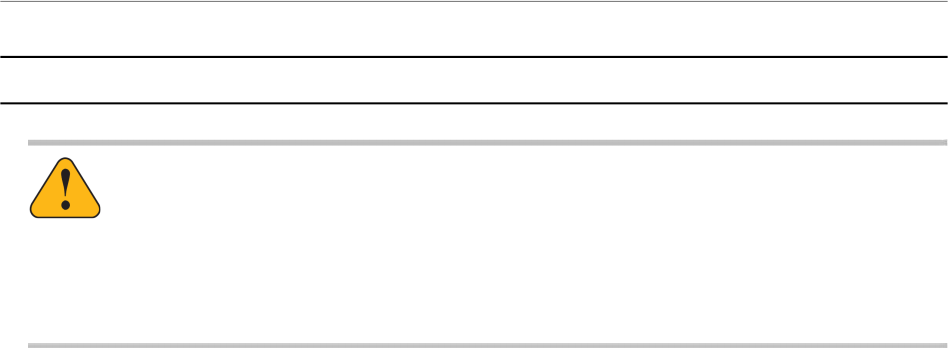User Manual
Table Of Contents
- Technical Support
- Preface
- Introduction
- Overview Reference
- Series 647 Hydraulic Wedge Grips Component Identification
- Series 647 Hydraulic Wedge Grips Functional Description
- About Gripping Specimens
- About Wedges
- About Spiral Washers
- About Couplings
- About All Temperature Grips
- About Environmental Chambers
- Hydraulic Fluid Recommendations
- Cooling Water Specifications
- Series 647 Wedge Grip Temperature Ranges
- Series 647 Hydraulic Wedge Grip Force and Torque Capacities
- Safety
- General Safety Practices: Grips and Fixtures
- Read all manuals
- Avoid Pinch and Crush Points
- Locate and read hazard placards/labels
- Know facility safe procedures
- Know controls
- Know Specimen Properties
- Have first aid available
- Be aware of component movement with hydraulics off
- Keep bystanders safely away
- Wear proper clothing
- Remove flammable fluids
- Check bolt ratings and torques
- Lift Equipment Safely
- Practice good housekeeping
- Do not exceed the Maximum Supply Pressure
- Do not disable safety devices
- Provide adequate lighting
- Provide means to access out-of-reach components
- Wear appropriate personal protection
- Handle chemicals safely
- Know system interlocks
- Know system limits
- Do not disturb sensors
- Ensure secure cables
- Stay alert
- Contain small leaks
- Stay clear of moving equipment/avoid crush points
- Know the causes of unexpected actuator motions
- General Precautions for Environmental Components
- Hazard Placard Placement
- General Safety Practices: Grips and Fixtures
- Installation
- Operation
- Maintenance

DescriptionItemDescriptionItem
Spiral Washer Set9
1.
Warning:
Grip installation is dangerous because it occurs within the crush zone of the force train while
full hydraulic pressure is applied and actuator movement is required during the installation.
Unexpected actuator movement can cause personal injury and damage to the equipment.
Take every precaution to avoid unexpected actuator movement while installing the grips.
Set up the load unit.
a) Turn on the system hydraulic pressure.
b) Adjust the actuator and crosshead positions as necessary to create adequate room to install the grips.
c) Turn the hydraulic pressure off.
Ensure that system hydraulic pressure has been reduced to zero before proceeding. To do this, turn
off the hydraulic power unit and exercise the actuator until it stops moving.
d) Clean and lubricate all of the surfaces that will contact each other (screw threads, spacers, and so
forth).
2. Mount the lower grip to the actuator piston rod using the appropriate stud, shims, spacer, or spiral washers.
a) Place a small piece of compliant material in the threaded hole of the grip and thread the stud into the
lower grip.
The connector stud should turn freely. If any resistance is encountered, disassemble and correct the
problem before proceeding.
b) Add any required shims, spacer, or spiral washers to the stud.
The attachment kit drawing shows what components (such as shims, spiral washers, and so forth)
should be installed.
c) Position the lower grip to align it with the connecting stud and stabilize the grip.
• Place appropriately sized wood blocks across the load unit base plate, on opposite sides of the
actuator piston rod.
• For heavy grips, insert the double swivel eyebolts into the threaded holes provided on the grip
chamber. Attach a lifting device to the double swivel eyebolts and carefully raise the grip.
d) Turn on hydraulic pressure and raise the actuator rod until it just makes contact with the connector
stud. Reposition the grip, as necessary, to center the stud over the actuator rod.
e) Slowly screw the grip into the actuator rod, raising the actuator rod as you go, until it is snug.
The connector stud should turn freely. If any resistance is encountered, disassemble and correct the
problem before proceeding.
Series 647 Hydraulic Wedge Grips Reference Manual 53
Installation










